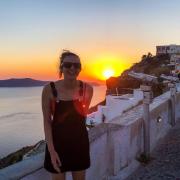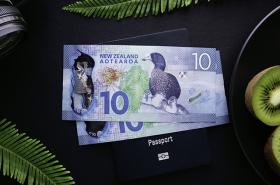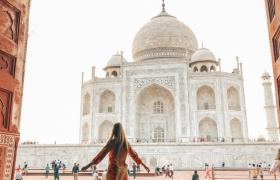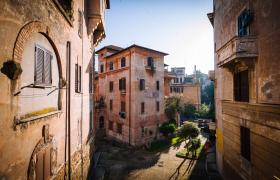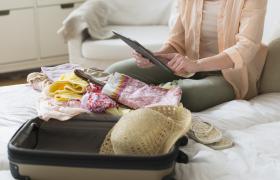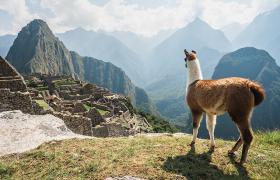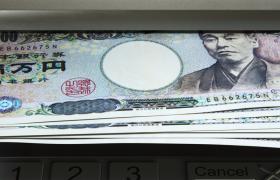Miscusi, are you planning a trip to the land of pasta, pizza, cured meats, cheese, glorious wines and lovely moustached men that sit in cafes sipping espresso all day? Of course, I mean Italy, and I hope for your sake that you are planning a trip to this gloriously, carb-filled country.
Regardless of whether you're a history buff with your sights set on Rome, a wine lover longing for the Tuscan hills, a fashion icon ready to splurge in Milan, or are ready to lose yourself in the streets of Venice, Italy has something to offer everyone. And, by something, I mean pasta. Lots and lots of magnificent pasta.
As you lose yourself planning an Italian escape (and madly work out at the gym to lose 2kg that will no doubt be replaced by carbs overseas), you mustn't forget the b-word. No, not bechamel sauce. Budget. Your holiday budget to be exact.
Have no fear though, the team at Travel Money NZ are Italian veterans and are here to provide all of the budget advice you could need. Plus, we have a handy budget calculator that can help you map out exactly how much you'll need to save for your Italian adventure.
To start, let's chat about the components of an Italian holiday budget.
What goes into a budget for Italy?
Every traveller is unique in their style and spending habits. As a result, your budget can be very different from your travel buddy, or even your past self that travelled to Italy 10 years ago. Regardless of these differing travel styles, everyone has to invest in a few core expenses.
Transport
Flights will often be your most significant expense, mainly because Italy is on the other side of the world to New Zealand. Flights generally take around 24 hours, with a stopover or two to stretch the legs. Thankfully the New Zealand to Europe route is a busy one, and you will often find sales on airfares. If you are keen to save some cash, avoid flying during peak season or European summer, when both the prices and temperatures increase.
Once you arrive in Italy, you then need to look at both cross-country and inner-city transport options. Chances are you won't be staying in one place for the whole time, so the following transport methods are available to you:
-
Car hire. Highly recommended if you want to take things at your own pace and make the most of the Italian countryside and smaller towns. Just be mindful of the young driver fee if you're under 25, any one-way fees if you aren't making a round trip and grabbing extra insurance if you are driving in winter. Just keep in mind that Italian city streets are pretty small, so be sure to hire a car that suits.
-
Trains. These are generally pretty affordable, super fast and allow the chance to stare out the window at the Italian countryside and imagine you're in a music video (surely I'm not the only one that does this?). If you are doing a more extensive Europe trip, consider a Eurorail pass. Otherwise, if you book far enough in advance, you can often get 'business class' rail tickets for very reasonable prices.
-
Flights. Cross country flights are your quickest way of getting from A to B, and the abundance of low-cost carriers in Europe can make it a relatively inexpensive venture. To save money, sign up to RyanAir and Easyjet sale alerts.
Inner-city transport differs with each city you are in. Venice, for example, relies on ferries and gondolas, but you'll be pretty relying on your trusty feet to get around. In Rome, Milan, Turin and Naples you'll be able to make the most of their metro systems. In other cities, you'll find regular bus services to get around. Of course, you then have ride-share apps to assist where public transport cannot.
Smaller towns are a bit harder, and a lack of public transport is part of their charm. In these instances, a hire car is your best bet.
Accommodation
Accommodation costs will vary between cities and towns. Bigger cities, especially Rome and Milan, will have higher accommodation costs, especially in popular tourist areas like around the Trevi Fountain.
Regardless of this, you will be able to find accommodation for every budget wherever you go. I highly recommend you splurge on at least one villa-style home, particularly if you are staying in Tuscany. They are incredible, and the opportunity to sit on a balcony overlooking the Tuscan hills, a glass of wine in one hand and cheese in the other is so worth the extra expense. Airbnb has a lot of Italian gems on offer, so be sure to spend some time searching.
In smaller towns, you're often greeted by family-owned inns or lodges. These are extraordinary, and you'll experience small-town Italian hospitality like no other. Bonus points if they offer a free aperitivo at happy hour.
Food
Food will play a big part in your Italian holiday, and I encourage you to throw caution to the wind and eat as much as possible. No seriously, you can go to the gym when you get home, but you're only in Italy for a little while, and you'll kick yourself if you don't embrace the glorious food as much as possible while there.
Food prices will vary between cities and towns, so depending on where you are going, you will need to budget accordingly. A word of advice though - the closer you are to a tourist hot spot (think Trevi Fountain, Colosseum etc.) the more expensive and less delicious the food will be. Walk a few blocks over and whip out Google to search for the best restaurants nearby.
I paid 22 euros for a small bowl of carbonara in the middle of Florence, and 8 euros for a bowl bigger than my head in a little town called Entracque. The large bowl was a homemade family recipe and came with free aperitivo as well, which is a delicious bargain in anyone's eyes.
Here are a few tips for saving money when purchasing food in Italy.
-
Tipping isn't necessary, so enjoy your food and thank them with an empty plate and a huge smile.
-
If you need a caffeine hit, it's cheaper to stand at the cafe bar instead of sitting at a table.
-
A lot of places offer 'grab-n-go' meals like pizza slices and paninis. These are often seriously good quality and are far better from the servo pies we are used to at home.
-
Head to the local deli or supermarket to buy some fresh bread, meat and cheese: an utterly delish and super cheap lunch or dinner.
Activities
You'll want to partake in a few activities to burn off all of those carbs you are eating. Unlike other destinations, guided tours are often the best choice in Italy. Why? Well, for a lot of monuments and locations like Pompeii, the Vatican and the Colosseum, there are layers of history that should be understood to make the most of the experience. While tours can be slightly more expensive, they are well worth the cost and will often allow you to skip the line. Keep an eye on sites like tour radar and Groupon for sales on your tours of choice.
When it comes to free or low-cost activities, museums will be your best bet. Not only do they provide hours of entertainment, but are generally super cheap. Some museums will also offer free entry on certain days of the week. For example, the Louvre is free to enter on the first Saturday of every month between 6 pm and 9:45 pm.
Finally, Italy's charm comes from the ability to lose yourself wandering the streets, popping into cute boutiques and chatting to local vendors. It's a vibe I have yet to experience anywhere else and is the perfect way to pass a few hours… or days. Just be careful as you may spend more than expected shopping at the boutiques.
If you're travelling in winter, don't forget to account for extra expenses like mountain passes and ski hire!
Pre-travel expenses
Regardless of where you go, travel insurance is a must. Italy is part of the Schengen zone, so Kiwi's won't require a visa either.
Maybe consider investing in a few sweatpants to prepare for all of those carbs too.
How much does an Italy trip cost?
Time to work out your travel budget with our holiday budget planner!


